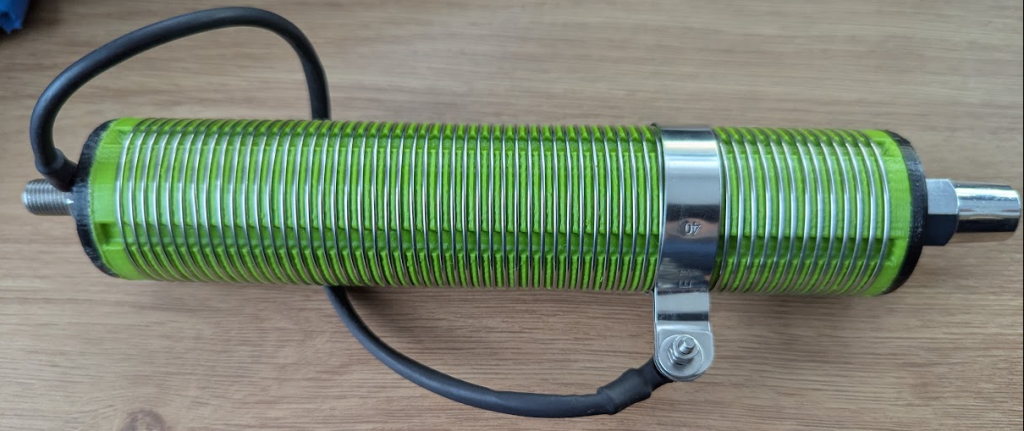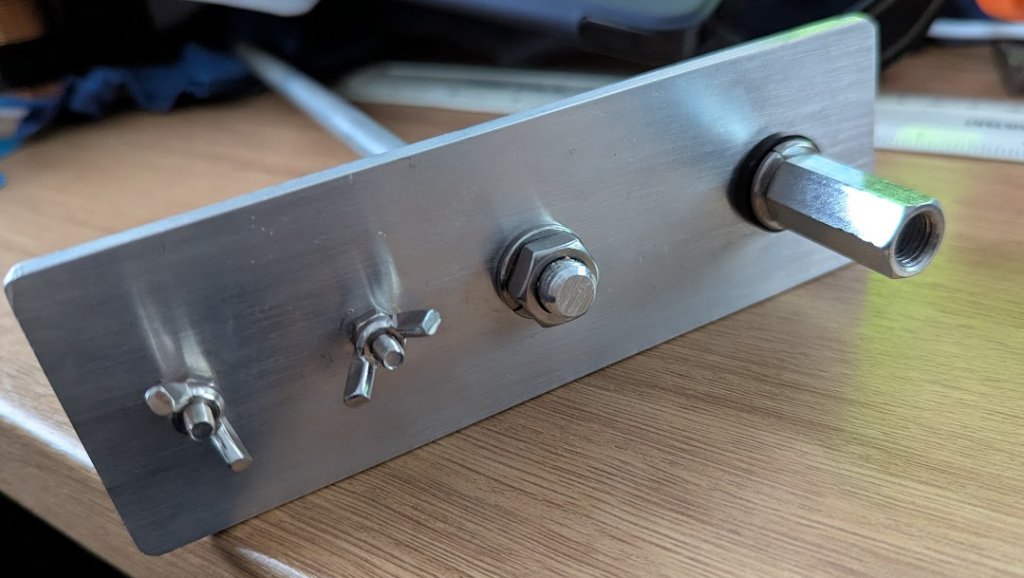
I wanted to try some POTA work, or QRP in general, so ordered up a Slidewinder DX Spike kit from M1ECC Antennas. Unfortunately, the weather hasn't been on my side for a couple of weeks, what with wind and band conditions!
When the kit arrived, I was impressed as how well it was all packaged. Everything was neatly packed in solid cardboard tubes, and the quality of the SlideWinder was very good. It's 3D-printed but feels pretty solid, and the slider, which as with the coil wire, appears to be marine quality stainless steel, and has a good action on the coil. You can adjust the screw if you need to loosen or tighten it, but mine felt just right. It has ⅜ 24 fittings.

The whip feels robust but light, and the rest of the kit is well constructed. It's easy to put up and take down, and looks like a military style antenna. It has 7 sections and folds down to 43cm or 17 inches. It has protective wrap on the joints for protection in transit, and a heat-shrink piece on the base and on the tip. The whole thing uses shock cord, so as long as you remember to put it up from the base upwards, and take down from the tip downwards, it should work perfectly. Otherwise it may break. The antenna quality is good, with brass fittings and top/bottom of each section, and the rest is green-painted stainless steel.

The aluminium ground spike feels pretty strong. The plate has two posts with wing nuts for the radials, but it does leave some dirty marks on your hands initially, so don't unwrap it on your best white linen! It has a ⅜ 24 connector on top, and SO239 underneath.

The radials are constucted with good quality stranded cable, but the ends tend to get tangled up due to the heat shrink and cable ties leaving the ends slightly free to get caught. I adapted mine. They come wrapped around a 3D-printed holder, and they have 3D-printed tags on the end where you can peg them down.


Anyway, today I managed to get out and do some initial testing. I went to the New Forest. It was a bit grey, wet and occasionally blowy so I was careful to keep an eye on things. It's also worth pointing out that the New Forest, while it has a number of flat exposed areas, is only at an average of 88M above sea level.
Initially I set the antenna up on a tri-mag mount on the car.

Setting the SlideWinder up is simple. You adjust the slider for maximum noise, and then tweak for low vSWR as needed. I actully have created a template so I can adjust it to bands quickly. Some users have marked with Tippex but I prefer to leave things untouched, so made a 3D-printed marker showing where to line up the slider for the bands. I made the marks while connected to a nano-VNA and tuned it for low points. There are very satisfying dips on most bands. Once I am confident these marks work in general, I'll reprint it with markers etched in.

I thought I'd have a go on FT8 as I was on QRP, and within a minute I was getting results. In all, in under 10 minutes, I got contacts in Austria, Russia, Slovenia and France.

I was pretty happy with this. I wasn't able to make any SSB contacts which was a shame. Saturdays are busy with people who like to shout, say their callsigns very slowly and generally try drowning out the others during contests and the like. "M0KCL QRP" gets drowned out by "I'm running 1.21 Gigawatts out of Hill Valley"...
After this, I went a bit further and found a quiet spot to park, where I set up the ground spike kit. I forgot to bring my 1:1 choke, which should be at the base of the spike, but hey ho!

At this time, I'm using an old length of RG213 while I get a feel for mobile work. If I decide to do more of it, I'll get some Potaflex.
It was simple to set up, however I was glad I brought a hammer and piece of wood, as the ground was very hard. Anyway, spike spiked in, radials fanned out and SlideWinder and Milwhip mounted, I set to work.

Again, I was unlucky in being able to make any SSB contacts, but FT8 was successful to Spain, before the wind picked up a little too much for my liking. Fearful for the SlideWinder, I removed it and just mounted the antenna on the spike. This got me onto 10m and although the band was dead, I did hear a couple of people.
On the bands I tried, I was able to keep the vSWR under 1.5 consistently.

My spots were pretty impressive too.

All in all, I'd say that initial impressions of the Slidewinder DX are extremely good. The build quality is good, the performance is good. Next time I will try on my IC-7300 and push out a few more Whiskeys...
If I had any suggestions to the M1ECC team, it would be to refine the ends of the radials a bit to address the snagging, and maybe some longer velcro as you do need to wind the radials very flat to get it to fit.

But, good results from a good piece of kit from M1ECC Antennas!